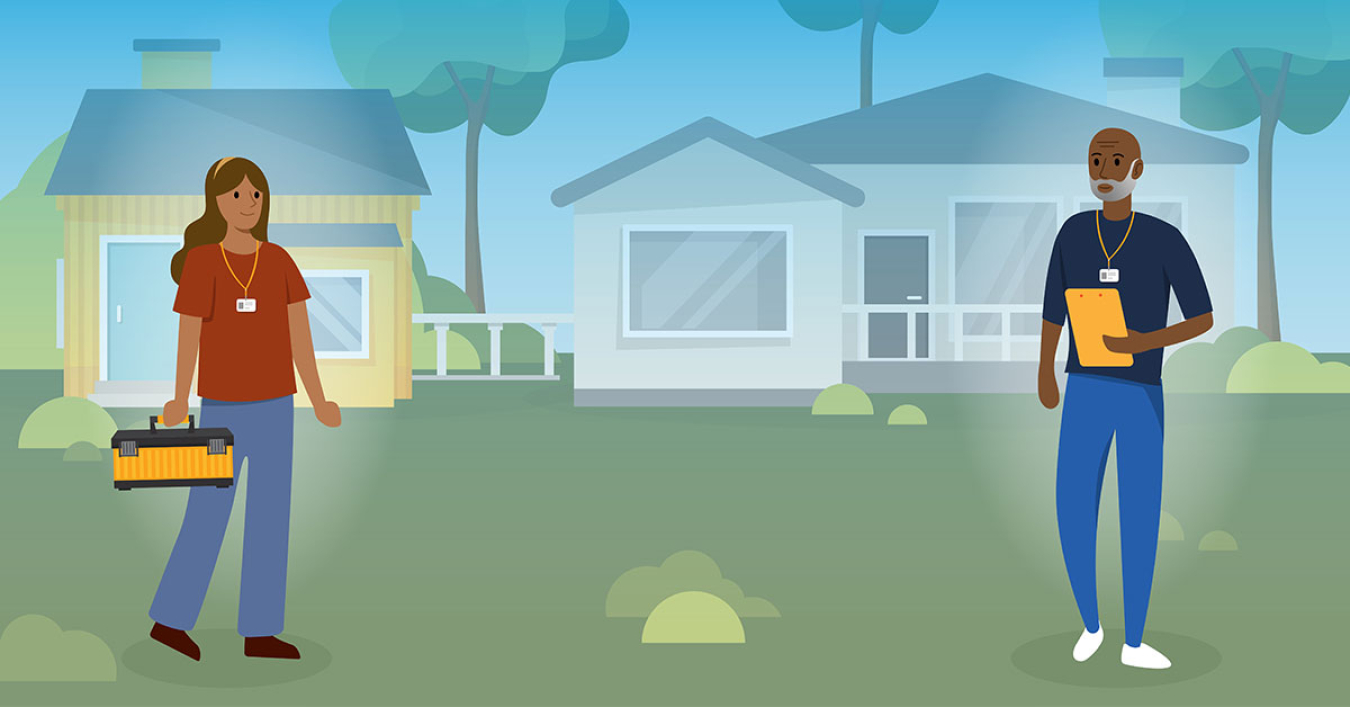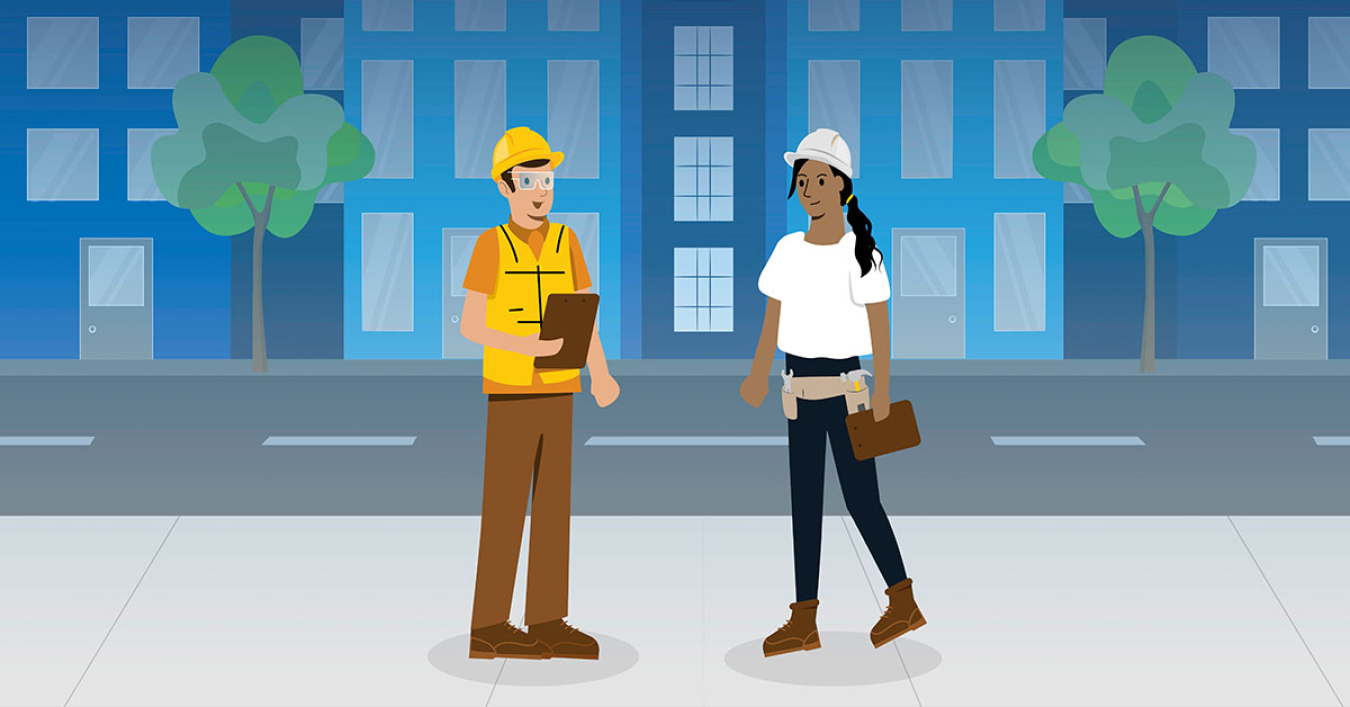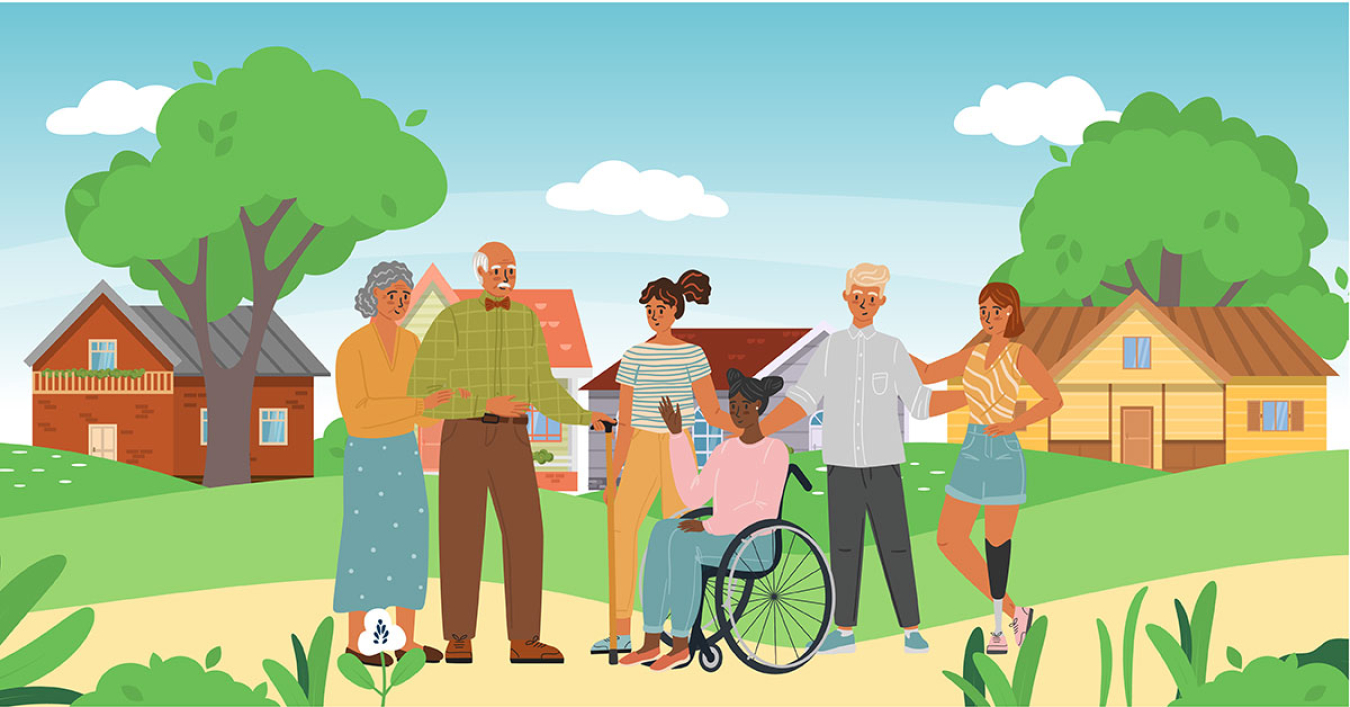Since 2015, Florida has received $25.3 million from the Weatherization Assistance Program (WAP) and $16.1 million from the State Energy Program (SEP), resulting in the following benefits:

2,296 Homes Weatherized
Florida reduced energy costs and improved health and safety in 2,296 homes.*

1,292 Jobs Created or Retained
The State Energy Program creates or retains one job for every $12,500 invested.*

114,914 Square Feet of Building Space Retrofitted
Since 2015, Florida has installed energy efficiency upgrades in 338 buildings.*

Connected with 653 People About Energy Efficiency Installations
Florida held 33 workshops, webinars, trainings, or outreach events since 2015.*
* Findings from a National Evaluation of the State Energy Program and a National Evaluation of the Weatherization Assistance Program.
States report outcomes of State Energy Program and Weatherization Assistance Program formula (annual) fund activities to DOE on a quarterly basis. The metrics above are outcomes of formula-funded activities since 2015.
The SCEP Project Map highlights the annual formula and competitive funding for WAP and SEP.
Florida's State Energy Program at Work
Florida Wastewater Treatment Plant Energy Program
The Florida Department of Agriculture and Consumer Services Office of Energy (FDACS OOE) is using $2 million SEP funds to impact energy projects at publicly-owned wastewater treatment plants. The performance of 15 competitively awarded participants throughout the state is measured for each project according to net annual energy saved at the facility, energy saved per dollar funded, and the amount of energy used to process one million gallons of wastewater. This project represents a tremendous opportunity for Florida wastewater treatment plants to reduce energy use and reduce greenhouse gases by installing energy-efficient equipment and implementing conservation strategies. Pinellas County, FL completed their project by December 30, 2022, and begin tracking energy savings for at least one year following completion of the project. To date, Pinellas County, FL has reported the following post-energy savings data:
| MONTH | PRE-INSTALL (KWH) | POST-INSTALL (KWH) | TOTAL SAVINGS (KWH) |
|---|---|---|---|
| January | 2,450,614 | 2,447,539 | 3,075 |
| February | 2,034,502 | 2,151,254 | -116,752 |
| March | 2,180,081 | 2,136,757 | -43,324 |
| April | 2,550,736 | 2,337,861 | -212,875 |
| May | 2,181,761 | 2,254,244 | 72,483 |
| June | 2,382,508 | 2,249,224 | -133,284 |
| July | 2,438,196 | 2,482,307 | 44,111 |
| Total | -386,566 |
Florida Counties Low-Income Residential Energy Efficient Grant Program
FDACS OOE is using $1 million from SEP to fund the Florida Counties Low-Income Residential Energy Efficient Grant Program. Recognizing that housing, health, and energy efficiency are closely intertwined, the program seeks to reduce the burden of residential high energy cost expenditures through the improvement of ventilation, insulation, and inefficient equipment. This grant program is providing funding in Broward, Miami-Dade, Orange, and Sarasota Florida counties to assist low-income single-family and multifamily households with energy efficiency measures. The project's target date for completion was Nov. 30, 2021, and energy savings are being tracked for at least one year prior to the upgrade and one year following completion of the project. Specifically, Orange County, FL has reported the following post-energy total savings data for 48 program beneficiaries:
| Estimated kWh Savings | Actual kWh Savings | Estimated Cost Savings | Actual Cost Savings | Estimated CO2e Savings | Actual CO2e Savings |
|---|---|---|---|---|---|
| 162,606 | 97,207 | $21,492.92 | $88,726.57 | 108.9 | 47 |
SunSmart Schools Emergency Shelter Batteries
The SunSmart Schools Emergency Shelter (E-Shelter) Program is an energy education program contributing to a more sustainable and energy-independent Florida. This SEP-funded program, originally launched in 2010 in partnership with the Florida Solar Energy Center (FSEC), has equipped 118 schools that were designated as emergency shelters with photovoltaic (PV) systems with battery storage for backup power.
The SunSmart E-Shelter Schools have weathered numerous tropical storms and hurricanes over the past decade, but all PV systems with battery storage have survived the severe weather events unscathed, proving their quality and resiliency.
Each E-Shelter PV system has been inspected to determine the need for replacement or updating equipment. Based on the results of the inspections, FDACS OOE has begun implementing phase two and three of the program to replace certain equipment, particularly batteries that are no longer performing at capacity. Phase 2 began the ($1,000,000) upgrades and repairs to systems pursuant to the findings during Phase 1. Phase 2 targeted the systems in closest proximity to FSEC and also those with the least complex repairs. Phase 3 (A – minimum of 25 systems/B – Balance of installed systems) will continue these ($1,494,081) upgrades and repairs to the remainder of the systems.
Florida Urban and Community Farming Pilot Program
Florida’s landscape has changed greatly in the last 70 years. Since 1950, 18.2 million more people call Florida home. With this increase in population also comes more homes, businesses, and roads. As our cities have grown in the past 70 years, Florida has lost over seven million acres of farmland. As this land helps feed the people of our state as well as the rest of the country and employs 2 million people, its loss is important to all Floridians.
With the loss of so much farmland, a phenomenon is now occurring in Florida, as well as all over the world known as "urban heat islands”. This occurs when urban areas replace natural land cover with dense concentrations of pavement, buildings, and other surfaces that absorb and retain heat. This effect increases energy costs, air pollution levels, and heat-related illness and mortality. Urban areas are particularly vulnerable to the threats of excessive heat as many cities are home to large populations of low-income individuals who have limited access to healthcare services.
Incorporating green spaces and gardens is particularly effective in helping to keep the urban built environment cool. Research shows that urban farming decreases high nighttime temperatures during summer months, which is an important public health finding as nighttime temperatures are a better metric for capturing negative health effects from extreme heat than daytime temperatures.
Regions such as these are also likely to become food deserts: very large population, low income, high levels of unemployment, inadequate access to transportation, and a low number of food retailers providing fresh produce at affordable prices. The lack of access to healthful foods and easy access to fast foods may be linked to poor diets that are high in sugar, sodium, and unhealthful fats. This can contribute to diet-related conditions such as high blood pressure and cardiovascular disease. Many food deserts also provide limited or unaffordable healthcare services. This contributes to negative health outcomes for people living in these areas.
Urban farming also has the potential to provide residents in a food desert with fruits and vegetables so they may enjoy a healthier diet and lifestyle. According to a Johns Hopkins report, urban farming’s most significant benefits center around its ability to increase social capital, community well-being, and civic engagement with the food system.
Program Objectives
- Objective 1: Establish a long-term grant program to provide more communities cleaner air and a stable, affordable, and secure source of fresh produce.
- Objective 2: Identify ways to grow fresh produce locally in urban and community farms for the benefit of those experiencing food insecurity.
- Objective 3: Reduces energy costs of food production growing
- Objective 4: Provide incentives for community involvement in reducing CO2 and the production of nutritious food.
- Objective 5: Promote CO2 sequestration in the most heavily populated areas including urban areas and the most densely populated and heavily traveled areas of medium to small-sized cities and towns by growing food where it is consumed
This grant program funded $457,977 in various areas for the state. Qualified applicants include local governments, Florida School Boards and community based non-profit organizations which offer community gardening and/or food pantry programs.
Learn more about SEP competitively awarded projects.
Florida's Weatherization Assistance Program at Work
The Florida Department of Commerce (FloridaCommerce) is the managing agency for Florida's Weatherization Assistance Program. The program contracts with local community action agencies and nonprofits to install weatherization improvements in low-income households throughout the state.
Between 2010 and 2022, through Florida’s WAP, the state weatherized an average of 335 homes per year with formula funds.
Learn more about Florida's Weatherization Assistance Program.
Success Stories
Florida Takes Initiative
Better Buildings Initiative
More than 900 organizations are involved in the Better Buildings Initiative working to reduce energy and water waste and modernize the nation’s buildings and industrial facilities. Download the 2023 Better Buildings Progress Report for more information on the Initiative as a whole.
Better Buildings Challenge Partners
The cities of Fort Lauderdale, Margate, Orlando, and West Palm Beach, Orange County, and the Alachua County Public Schools have taken on the Better Buildings Challenge, a commitment to reduce the energy use of their entire building portfolios by 20% within 10 years and are making progress toward their energy reduction goals. As of 2021, public-sector Challenge partners have cumulatively saved 133 trillion Btus of energy, $1.27 billion, and 1.5 billion gallons of water since the Challenge was launched in 2011.
Better Climate Challenge
The U.S. Department of Energy (DOE) is challenging organizations to set ambitious, portfolio-wide GHG emission reduction goals. This new effort provides additional opportunities for peer exchange and technical assistance to meet the urgent call to mitigate the impacts of climate change.
The city of Orlando has joined the Better Climate Challenge, a commitment to reduce their portfolio-wide scope 1 and 2 GHG emissions by at least 50% within 10 years. Orlando will pursue an energy efficiency target as part of this commitment, recognizing efficiency as a key driver of decarbonization.
Better Buildings Accelerators
In the past five years, SCEP has engaged nearly 100 partners in Better Buildings Accelerators. These Accelerators are designed to demonstrate specific innovative policies and approaches, which will accelerate investment in energy efficiency upon successful demonstration. Each Accelerator is a targeted, short-term, partner-focused activity designed to address persistent barriers that stand in the way of greater efficiency.
To learn more about other Better Buildings partners and solutions in the state of California and other states involved in the Better Buildings Initiative, check out the Better Buildings Partner map.
ESPC Accelerator Partners
The city of Fort Lauderdale helped catalyze public-sector energy efficiency investments of over $2.1 billion in Energy Savings Performance Contracting (ESPC) from 2014–2016 as one of 25 state and local agency partners in the ESPC Accelerator. See demonstrated best practices in the ESPC Toolkit.
Outdoor Lighting Accelerator Partners
The cities of Deerfield Beach, St. Petersburg, and West Palm Beach, partners in the Outdoor Lighting Accelerator (OLA) from 2014-2016, pledged to upgrade its streetlights as a part of a nationwide commitment to retrofit 1.3 million light poles with high performance lighting. These commitments are expected to result in annual savings of $48 million. See the Outdoor Lighting Toolkit for more information and demonstrated best practices.
Sustainable Wastewater of the Future (SWIFt) Initiative
Miami-Dade Water and Sewer Department and the city of Tallahassee committed to improving the energy efficiency of their participating water resource recovery facilities as part of the Sustainable Wastewater Infrastructure of the Future (SWIFt) Initiative Phase 1 from 2016-2019. SWIFt Phase 1 hosted 25 state, regional, and local agencies that engaged with more than 70 water resource recovery facilities in their jurisdictions and successfully reduced their total energy consumption by almost 7%, adopted best-practice energy management approaches showcased in the Wastewater Energy Management Toolkit, and created plans to achieve 30% energy savings.
The cities of Miami, St. Augustine, Sunrise, and Tampa committed to improving the energy efficiency of their participating water resource recovery facilities as part of SWIFt Phase 2. SWIFt Phase 2 is engaging wastewater treatment facilities in a voluntarily partnership to achieve 5% short-term and 25% long-term facility-wide energy savings and implement at least one next-generation technology (e.g., renewable energy, resource recovery, and advanced data management).
Publications, Resources, Helpful Links
- State and Local Solution Center, a one-stop shop of impactful public-sector resources
- Weatherization Assistance Program
- State Energy Program
- NASEO State Energy Office Contact
- Contact State Weatherization Agency
- EIA State Profile and Energy Estimates
- Fort Lauderdale Better Buildings Challenge Partner Profile
- Margate Better Buildings Challenge Partner Profile
- Orlando Better Buildings Challenge Partner Profile
- West Palm Beach Better Buildings Challenge Partner Profile
- Alachua County Public Schools Better Buildings Challenge Partner Profile
